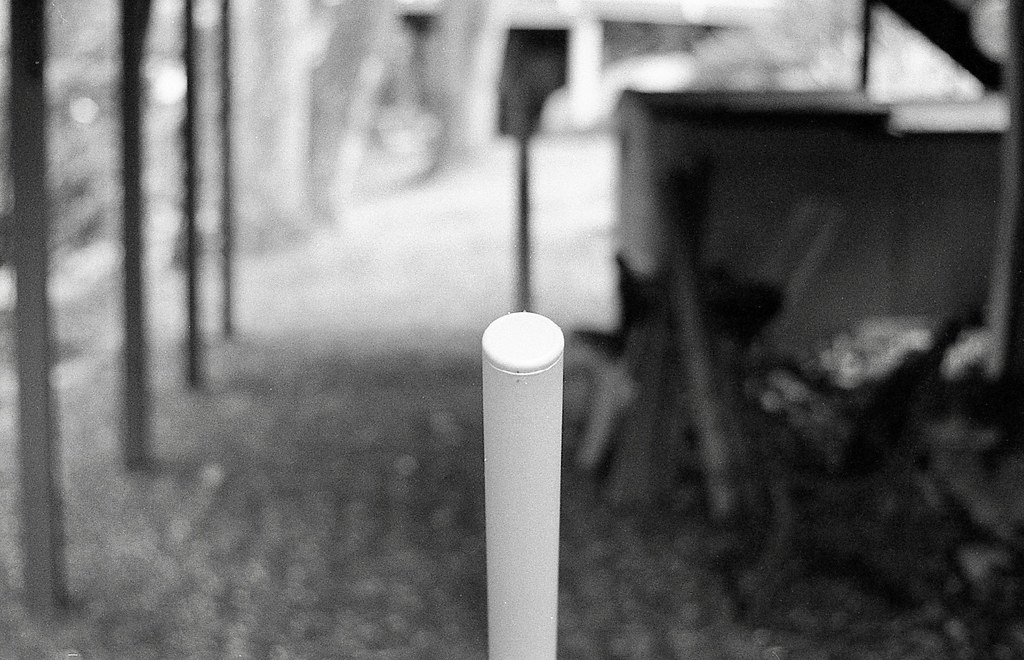This collection of light sensing gizmos is merely a reflection of the gear head in me since I'm quite proficient with Sunny 16. My dad taught me how to take photos using his unmetered Yashica Penta J. When I see unloved vintage/classic camera paraphernalia for a couple of bucks, I am eager to provide a good home for them. If you want to see my handheld light meters, click here.
Except for the Voigtlãnder VCII, all these light meters employ the match-needle system on an analog dial, which remind me of a slide rule, albeit, circular. For more information, the user manual (when available) is hyperlinked in the text under the picture of each light meter.
 |
Leica Meter 2 |
This selenium light meter doesn't need batteries. The light it is measuring powers the meter. However, selenium isn't as sensitive under low light conditions compared to a battery powered CdS (Cadmium Sulphide) or modern Silicone photodiode. It is smaller but thicker than the Voigtländer VCII and looks great on an early Leica Barnack body.
I paid a couple of bucks for this at an antique store a few decades ago. The selenium cell didn't react to light and the incident light attachment was missing. I sent it to Quality Light Metric and George Milton replaced the dead cell. I consider this more of a collectible than a user, thus, it spends most of its time inside its brown leather case, which prolongs the selenium cell's life.
 |
Gossen Pilot 2 aka Sixtino |
Significantly bigger than the Leica Meter 2 and a tad more sensitive in lower light, this Gossen selenium also measures both incident and reflected light. In my nearly 30 years of scouring Photorama camera shows, thrift stores and flea markets, I've yet to encounter one with a dead cell. This is one of the three I own and this particular unit was recently acquired at a flea market for $7. A bit bulky and just slightly smaller in girth than the Sekonic L-208, it's a nice meter for daylight photo walks. Highly recommended if you want a battery independent light meter!
 |
Kalimar Clip-On |
Not much information can be found about this relatively compact light meter except that which I've already linked. Kalimar was a US distributor of photographic equipment, which sourced cameras and photo accessories from all over the world and had their name stamped on the product.
This CdS light meter requires a PX625 Mercury cell, which is toxic and no longer available. The use of a modern PX625A yielded inconsistent readings. So I hacked a dead PX625 and inserted a 675 sized Wein-cell hearing aid battery into the PX625 shell. Voila! The needle moved when I pressed the button and got readings that were consistent compared to my known light meters. It's also more sensitive in lower light than the selenium meters.
 |
Sekonic Twinmate L-208 |
Sekonic is a Japanese company but the Twinmate L-208 is proudly made in the Philippines. Its Silicon photodiode is powered by a single CR2032 lithium battery and has a light sensitivity range of EV3 - EV17. It is a significant improvement over the above selenium and CdS light meters. Just like all the previous ones, this can measure both reflected and incident light.
Given its size, I think it looks better on a TLR camera. I really like the center match-needle/analog dial ergonomics compared to the $40 digital light meters from China fitted with tiny buttons to navigate around a squinty LCD screen. Is it necessary for every device to resemble a smart phone nowadays?
This CdS meter was designed to be powered by a Mercury 675 battery. Surprisingly, it works great with a modern LR/SR44 without modification. The specified EV range of -1 to 24 maybe a bit optimistic but it's pretty close to the VCII meter in terms of low light sensitivity and accuracy. It has no incident light capability, just reflected light.
 |
Voigtländer VCII |
I paid under $200 for this light meter in the mid 2000s and it's still available for $225 from Stephen Gandy at cameraquest.com. Not cheap but in the big scheme of things, it has paid for itself. Its accuracy and sensitivity are probably surpassed only (albeit, slightly) by the built-in meter on my Leica M6. The Si photodiode is powered by two very common LR44/A76/357 batteries and it only measures reflected light. It's not a match-needle type of meter. Instead, it sports a dial for shutter speed and another dial for f-stop/ISO setting + LED indicators. This is an analog design with only a hint of digital (LEDs) and IMHO, MoMA worthy!
Hot on its heels is a new kid on the block, the similarly sized, styled and spec'ed Doomo Meter D at $125. It's ironic that this retro-clone of the VCII is also the most expensive shoe mountable light meter manufactured in China.
Perhaps analog dials and retro tech logic do command and deserve a premium? Hmm...🤔 Right before I clicked the publish button, I noticed something new in the TT Artisan's website. Let's see how that goes...😉































































